-
Posts
4,748 -
Joined
-
Last visited
-
Days Won
119
Content Type
Profiles
Forums
Resource Library
Events
Gallery
Blogs
Store
Community Map
Posts posted by Mayner
-
-
4 hours ago, irishmail said:
I had a reply from Hatton's earlier, they said that they are having a few problems with shipment caused by Royal mail to the EU, despite Hatton's using all the correct labelling on parcels, however they said that I should pay the VAT/Customs charge and email the receipts to Hatton's and they will refund me.
Fair play to Hatton's for sorting it out.

Unfortunately its not simply a matter of non-EU resident companies like Hattons registering for Irish/EU vat, paying the tax and putting a tax paid label on the box, they are also required to either have a physical presence in the EU or use an EU customs agent or intermediary.
https://ec.europa.eu/taxation_customs/modernising-vat-cross-border-e-commerce_en
JM Design registered for Irish vat & an EORI number in March in order to export tax and duty paid to Ireland and the EU. We currently export to the EU at 0%Vat as we could not guarantee that our customers would not be hit with VAT & admin charges at the point of entry. The Revenue Commissioners were unable to provide guidance on the declaration and clearance process and our preferred shipper is currently unable to offer a delivery duty and tax paid service to the EU despite announcing the service in January 2021.
In practice it will probably be cheaper select shipment from the UK by a mail service and pay the vat on arrival than a Courier or Delivery Duty and Tax Paid service.
An Post €3.50 service fee is cheap compared to customs clearance charges for individual DDTP packages.
-
 1
1
-
-
50 minutes ago, j11sty said:
My cravens are MM and are numbered ending TL
Still I little head scratching which is best to go with

The ex-BR "Vans" http://silverfoxmodels.co.uk/ir-ie-generating-steam-van-ex-br-mk1-bsk/ is probably the best option for a van for TL fitted Cravens.
The "Dutch Vans" were less common (6) compared to the larger number (22) of ex-BR Vans
The Cravens were used almost exclusively on main line Intercity services until some were "cascaded" onto Outer Suburban and Secondary Passenger services following the introduction of the MK3 Stock from 1983 onwards.
Typical main line TL sets were usually made up of a "BR Van" "1951-53 Buffer Car and several Craven Coaches, TL fitted Park Royal & Laminate coaches were sometimes used to strengthen main line rakes.
-
Munster Simms appears to have been a fairly large oil distributor during the 1930s with both Belfast and Dublin registered wagon fleets.
A number of photos of Irish registered tank wagons in the HMRSI Charles Roberts Collection.
https://hmrs.org.uk/photographs/munster-simms-belfast-motor-spirit-14t-tank-no-2-order-942.html.
https://hmrs.org.uk/photographs/munster-simms-dublin-14t-tank-wagon-no-4.html.
-
 2
2
-
-
On 16/7/2021 at 8:50 AM, murrayec said:
One of the challenges of building an Irish Broad Gauge steam locomotive in OO gauge!
On the majority of outside cylinder steam locos the conrods are on the outside of the coupling rods but not on some outside cylinder 4-4-0 classes including the GNR Compounds and Metropolitan 4-4-0T.
It basically leaves the builder with the choice of cranking the coupling rods to avoid running problems or fitting the conrods on the outside of the connecting rods and using a longer crank pin bush.
-
 1
1
-
 1
1
-
-
Nice to see the subtle weathering of the Tin Van it must be 5-6 years since they left the Carriage Shops in ex-works condition!
The open un-cluttered nature of the place with no goods shed or station building reminds me of Fenit which I first visited in the summer of 78 several months after the last train (beet special)departed.
Have lots of fun!
-
 3
3
-
-
4 hours ago, jhb171achill said:
Yes, there was a GN loco shed at Cavan, and MGWR / GSR locos only went that far from Inny Junction (or, more specifically, Mullingar). Even between September 1957 and April 1959, when Inny Jct. - Cavan - Clones - Dundalk was basically one single long goods-only route, ex-GN steam locos still operated from Dundalk to Clones, and "C" class diesels operated from North Wall - Inny Junction - Cavan. There was no operational reason why it couldn't have been done as one route - maybe it would have at least lasted until the 1967 closures on that basis.
Layout idea: Cavan in 1966 - goods only, but many a GAA special!
There WERE a very small number of diesel operations from the Midland line north of Inny Jct. An "A" class took a GAA special out of Monaghan one time, south to Cavan and on via Inny Junction to Croker. But regular services never crossed over.
.
One of my favourite might have been scenarios was a "joint" MGWR-GNR line from Kells to Cavan via Virginia and possibly onwards to Enniskillen a better routing for Dublin-Cavan & possibly Monaghan passenger services than by Inny Junction.
An amalgamation between the Midland and the Great Northern was actually considered in the early 1920s with the LMS taking over the lines north and west of Dublin and the GWR taking over the GSWR, DSER and West Cork.
-
 2
2
-
-
Interesting both MGWR signs, the Inny Junction one is particularly interesting including Clones Junction a destination on the Great Northern.
There were no advertised connections between the Midland & GNR at Cavan in the 1897 MGWR WTT, though there are advertised connections are advertised between Navan Junction and Kells but not Oldcastle in the same timetable. The MGWR had running powers over the GNR between Navan & Kells possible reason for the connection.
In pre-amalgamation point Cavan was a major interchange point for cattle traffic from the Midlands to Belfast Port with trains working through between the two systems, presumably with loco change at Cavan or possibly Clones?
-
There are simpler & quicker ways to handlay track than using slide on plastic or 3D printed chairs or solder the rails to every sleeper!
Main Trunk tall steel viaduct scene with handlaid track on viaduct assembled using "Micro Engineers" parts.
S Scale NZR 3'6" gauge track (OO) with copper clad sleeper every 5th sleeper spacing, missing sleepers will be fitted using stripwood sleepers. Some NZR 3'6" gauge layouts use Peco or Atlas for hidden trackage and handlaid track in scenic areas.
Viaduct scene took 18 months to construct.
Layout was exhibited this weekend at Whitianga Train Show first time I have been to an exhibition in a long time!
I am planning to use spiked track for a planned 21mm gauge layout using stripwood sleepers spiked every 5th sleeper with soldered crossing wing rail assemblies.
-
 2
2
-
 2
2
-
-
16 hours ago, Patrick Davey said:
Not surprised - well done to all involved, you deserve for this to be a roaring success. A Crossley roar of course........
The Australian 3'6" gauge Metrovicks (WAGR X & XA Class) retained their Crossley engines to the end 1988 working narrow gauge Perth Suburban trains until services were electrified, few clouds of dirty smoke unlike the CIE engines.
-
 3
3
-
-
2 hours ago, murphaph said:
Holy moly that was quick. I will have to be faster on the second batch. Congratulations!
John I presume the open wagons are intentionally unnumbered so they can be renumbered using transfers. Why have you decided to number the brake vans? Will you be doing similar to IRM and with each rerun/batch issue a new number or will the number remain the same?
If you plan to release renumbered versions every so often I would just order one each time but if you don't plan on doing this I'd order a few in the next batch.
The first production batch of brake vans is substantially smaller than originally planned as a result of issues at the 3D printing stage which did not show up at the prototyping and test print stage. A small batch of 1950s vans is currently with our tampo printers waiting a slot in his production schedule.
I am expecting to release the 1960/70s versions of the vans which are currently in the paint shop during September with transfer lettering as it would have been uneconomic to reproduce the ducket warning stripes using tampo printing.
Pre-orders provides a reasonably accurate estimate of demand which will allow batch quantities to be increased/decreased as necessary.
23543 was lettered using tampo printing, alternative numbers would require a new printing tool and separate set up prohibitively expensive on small batch quantities.
We are planning to finish the Ranks grain wagon with transfer lettering with running numbers (1-8) which may be applied by the customer (running numbers).
We are not expecting to release the open wagons until the 1st quarter of 2022 and will certainly consider releasing these and other 'ordinary' goods wagons in fully decorated form with alternate running numbers or unlettered with a sheet of transfer lettering.
Our 3D printing bureau is currently completing a number of test prints of the grain wagon to establish a representative sample of prints to identify potential production and quality assurance issues before we produce the production batch, we have also bought a high resolution desktop printer for prototyping and small batch production with a larger production machine expected late 2021 early 2022 which will give us greater control and predictability of our production schedules.
I would forget speculating on our wagons we can always produce a batch of a particular wagon with minimal tooling and set up cost if there is evidence of sufficient demand.
-
 1
1
-
 3
3
-
-
17 hours ago, Westcorkrailway said:
Im still confused as weather these models are released or not!
The models can be ordered/pre-ordered on our on-line shop https://jmdesignmodelrailways.com/.
The first batch of Brake Vans in the 1950s grey are now sold out, the second batch (50s Grey)are currently with our tampo printers & we will start accepting orders once they are complete and assembled.
-
 2
2
-
 3
3
-
-
29 minutes ago, Patrick Davey said:
Got a text message today to say that my CIE brake van has been dispatched - wonder how long it will take to get to Ireland from NZ and I hope it survives the journey

Generally 2-3 weeks at the moment, recently an Airmail package from Markits arrived within 7 days and one from Wizard Models took 4 weeks.
Van is packed in a presentation box within a stout cardboard shipping box with foam or bubble wrap packing.
Packaging was a challenge as the traditional model railway style box with lid were unavailable and a vacuum formed insert prohibitively expensive, we used a medium density foam rubber to secure and protect the model.
 so should be ok.
so should be ok.


-
 10
10
-
 1
1
-
 2
2
-
-
One significant point if you intend to 3D print track and point bases Templot uses two different gauges for modelling Irish 5'3" track in 4mm scale.
21mm gauge for P4 standards and 20.2mm if you use EMF or OO gauge standards, Martyn Wynne did much the same to achieve improved running with rtr OO rtr rolling stock reducing the gauge from 16.5mm to 16.2mm or EM-2.
I struggled with Templot for a small EM gauge layout and have gone back to blown up EM gauge paper templates for 21mm gauge track.
3D printed point-bases are likely to be challenging particularly if there is no provision for adjustment in the location of crossing vee and switch assemblies.
Personally I have hand laid pointwork in 1:1, 1:24 and 1:76 scales using timber, copper clad and ABS sleepers, using fangbolts, spikes, and individual chairs and soldered assembly and did not find it particularly difficult or time consuming, the main difference was that I needed a lot more people and machinery in 1:1.
Chaired assembly either slide on or individually placed is a lot more time consuming and technically challenging than spiked or soldered assembly.
-
 1
1
-
-
10 hours ago, jhb171achill said:
That's a nice one to Bantry - apparently with a B1a up front!
Complete with what looks like a solid rake of "Silver Princes" stainless steel coaches
As they say paper never refuses ink or electrons to get excited!
-
 2
2
-
-
Improved trading relations with the UK culminating in the Anglo-Irish Free Trade Agreement brought prosperity to rural Ireland in the 60s.
My parents were surprised by the wealth of our "country cousins' when invited to weddings in County Galway during the 60s, wads of money was being splashed around like snuff at a wake, the women were dressed in the best Dublin & London fashion and the men driving new cars usually Mercedes, my mother and father felt like the poor city cousins instead!
Most had shifted from mixed farming to dry stock which needed very little looking after, those with smaller farms usually had a part time job often driving for the local builders or agricultural merchant, most families were building a new modern streamlined bungalow to replace the old farmhouse.
You can't go wrong with small black or brown Dexter cattle bred on farms in the West and shipped eastwards by rail for fattening in Meath or Kildare. Pilot loco from Galway working a short special to Athenry to connect with a main line goods from the smaller fairs or several A Class hauled specials with empty stock from Mullingar on the evening before the fair working the specials through to the North Wall for the bigger cattle fairs.
-
 3
3
-
-
15 hours ago, jhb171achill said:
"A"'s were never used in traffic in West Cork, but a trial run was carried out once or twice.
The traffic didn't warrant them, nor would it ever have been likely to have done, and in places it's possible bridges or track - which by 1955 was indifferent at best - mightn't have been keen on them.
However, had, for example, the Bantry oil terminal required oil trains in the 1960s, and the line survived maybe until the 1975 closures, it's likely you'd have got "A"s on the oil trains and inevitably 141s on passenger.
The C Class may have been used for operational convenience, the Cs seems to have been worked quite intensively on the West Cork with two main line goods trains each way daily & the loco of the "Drimoleague Goods" working some of the Skibbereen & Baltimore passenger/mixed trains & the loco of one-of the Up Goods swapping over with the Clonakilty C for its weekly examination and maintenance.
The main draw back of using an A on a daily West Cork goods there wouldn't have been another A to take over and haul the goods when it broke down, when a C broke down they could always rob a C off the second goods, a branch passenger train or a beet or a cattle special.
Certainly a C in its original or B233-4, B201/201 Class for would be an ideal follow up for the IRM A Class, as much as I like the Sulzers they did not have the same wide sphere of use or variety of liveries to support a rtr model as the Metrovicks
-
 5
5
-
-
Talking to myself Opps!
-
5 hours ago, DiveController said:
Hi John,
Great to see this and well done. Hopefully this goes very well and expands with time.
Question regarding preordering and small production batch of say 10 items required for the preorders of that particular wagon to be fulfilled.
Will it be possible to see the number of preorders presently existing on a given item so that one might anticipate when the production might run to go ahead?
e.g. 8 existing preorders ... if I go ahead and order 2 more wagons it would trigger a production run of that item etc
Site looks well. Best of luck with this!
K
Kevin
You threw up a bit of a curved ball there with batch and pre-order quantities of rtr wagons w

Because of the low level of demand minimum expressions of interest/order quantities applied to the production of etched loco and rolling stock kits.
We are committed to manufacturing the 3D printed wagons on our website (in much larger batches than 10!), the number of pre-orders will obviously influence the number of wagons produced and the number of models may be increased in response to demand.
One of the benefits of 3D printing over traditional manufacture is that its fairly simple to produce a repeat of a model or produce custom models or one-off prints, the main constraint is the time consuming nature of clean up process and removal of the support structure.
The anticipated release dates on the website are indicative only and are based on the current state of knowledge and will provide regular progress updates beginning with the decorated samples of Grain Wagons and Brake Vans with wheel logo expected mid-late August.
We are establishing in house 3D printing capability while our current supplier is working to improve print quality with test prints of the Grain Wagon in different resins for approval mid July.
We are planning to install in a high resolution desktop printer for prototyping and small batch production later this month with a production machine due late 2021/early 2022.
While there are likely to be teething problems developing in-house printing capability capability should result in greater level of control over production and quality of the finished models.
The ability to print in house with an external supplier as a back up for large orders will allow for more reliable production planning and manufacturing time frames.
Not bad considering I only had an "idea" of 3D printing models in May 2020.
-
 7
7
-
-
9 hours ago, WRENNEIRE said:
I still cant believe he never put a PCB board in these locos
I can understand OO Works not fitting PCB board/DCC sockets to their locos, it was a horrendous job fitting fitting a DCC socket to a MGWR 2-4-0.
Not really suitable for small batch manufacture, best left to Chinese massed produced plastic injection molded models with the economies of scale and a young mainly female workforce with nimble fingers and sharp eyesight.
-
 1
1
-
-
1. Currency: We have set up the option to display prices in Euro, Stirling, US, Canadian & Australian $ which should cover most customers under the Shopify Pay system, customers will be invoiced in NZ$, otherwise the banking and admin side of things becomes extremely expensive.
2. Duty & VAT: We originally planned to set up a DDTP system as an option for customers in the UK & Ireland and but have been unable to find a shipper who currently provides this service at a reasonable rate (for small shipments) to the European Union. Our shipper offers a relatively reasonably priced DDTP service to the UK and expect to have a DDTP option in place once we complete the UK VAT & EORI registration process, funnily enough we are already registered with the Irish Revenue but thats another story.
3. Consolidated orders: There should be no problem in consolidating orders or holding items until an order is complete.
4. Liveries and colour schemes: We are holding back on marketing certain models until the decorated samples are complete.
I have prepared 5 different graphic schemes for the bulk grain wagon without considering the GSR period & 70s brown.
The unlettered wagons will be in light grey just didn't have a suitable photo.
-
 5
5
-
 3
3
-
-
Our online store is now live!!!!!!!!!! https://jmdesignmodelrailways.com/
There has been a lot going on behind the scenes since the first batch of brake vans arrived from our suppliers in April, the main upshot is that the business is developing its own 3D printing capability while working with our supplier to improve consistency and quality of the models. This will lead to some delay in releasing models to market but should result in a better product.
We have finalised the graphics for the next batch of brake vans and the bulk grain wagon with Railtec Transfers producing the transfers, we will probably use pad printing for the open wagon and more generic wagons in the pipeline.
We are likely to start shipping the 52 Class loco kits in late July with the final detail parts and bearings arriving this afternoon, with shipping of 4w vans expected August/September.
-
 11
11
-
-
1 hour ago, Angus said:
I had fun and games with the tender handrails and handbrake in 4mm let alone 2mm.
It would be worthwhile to incorporate the ashpan into the main frames when you are cutting out the profile of the chassis, this will provide some added strength in the area around the rear driving axle the weakest part of the main frames.
-
 3
3
-
-
3 hours ago, jhb171achill said:
I believe they were no stranger to the 70s on the Cork line.
No 14 the Tullow Engine is a 52 Class or D17 the first Class of Irish express passenger 4-4-0 No 63 is one of the slightly larger and more powerful 60 Class or D14.
The 52 Class(introduced 1883) with their small boiler and firebox may not have been up to sustained high speed running & appear to have been mainly used on secondary main line and branch line duties following the introduction of the 60 Class in 1885.
The 60 Class had a reputation for speed and continued to be used on lighter main line duties on the Southern & DSER sections and piloting Dublin-Cork Expresses until replaced by railcars and diesel locos during the mid-late 1950s.
The 52 Class had a reputation of high speed 60+mph running on Galway-Tuam trains during the 1950s, while 60 Class No94 was recorded at 74.5mph between Mourne Abbey & Mallow while piloting the Cork-Dublin portion of the Enterprise.
-
 2
2
-
 1
1
-
-
You did a nice job on the sand boxes they are difficult enough in 4mm. I chickened out and used lost cast casting from 3D printed masters for the tender tool & sand boxes on the 52 Class kit.
The MGWR K Class appears to have shrunk down nicely to 2mm, it will be interesting to see how the foldup elements fold up so to speak.
-
 1
1
-
.png.c363cdf5c3fb7955cd92a55eb6dbbae0.png)

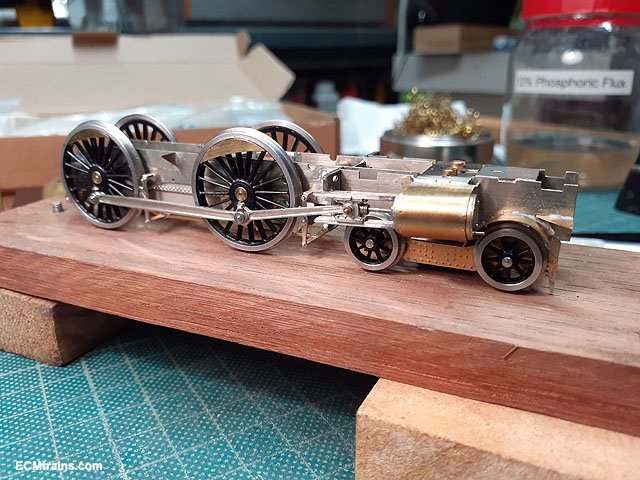
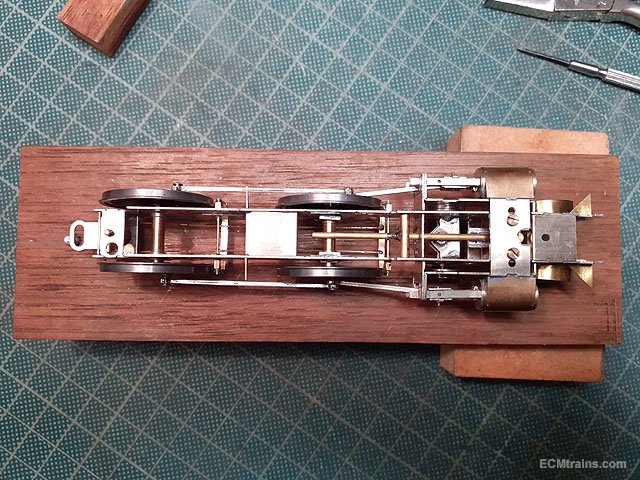

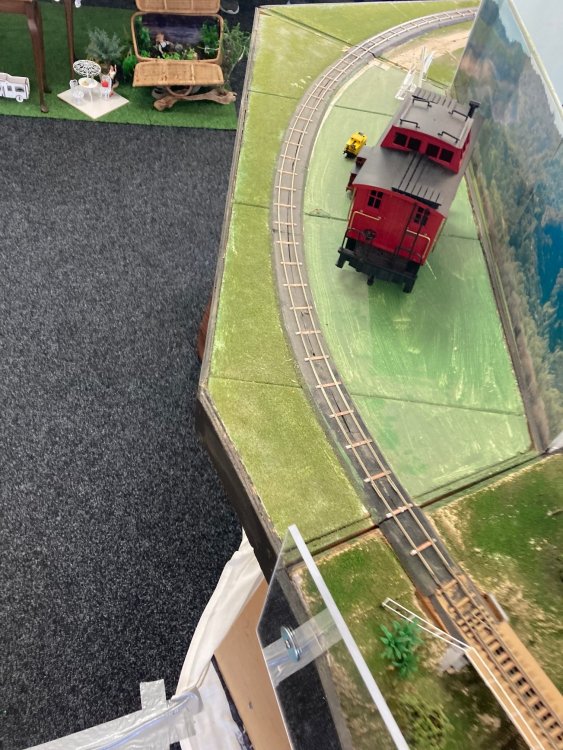
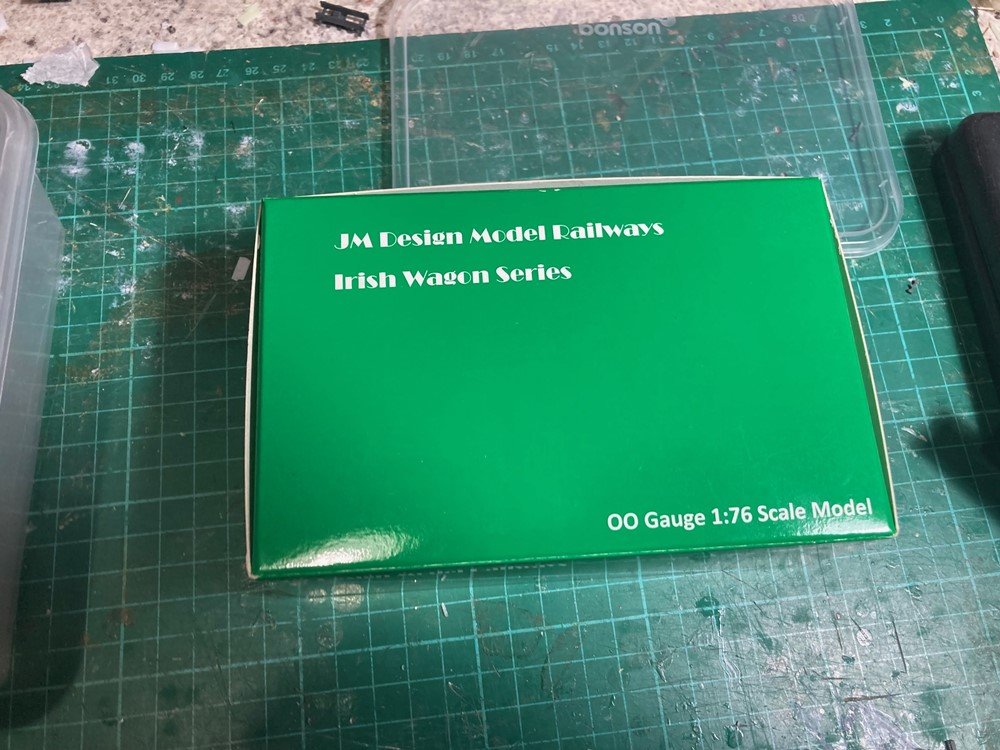 so should be ok.
so should be ok.
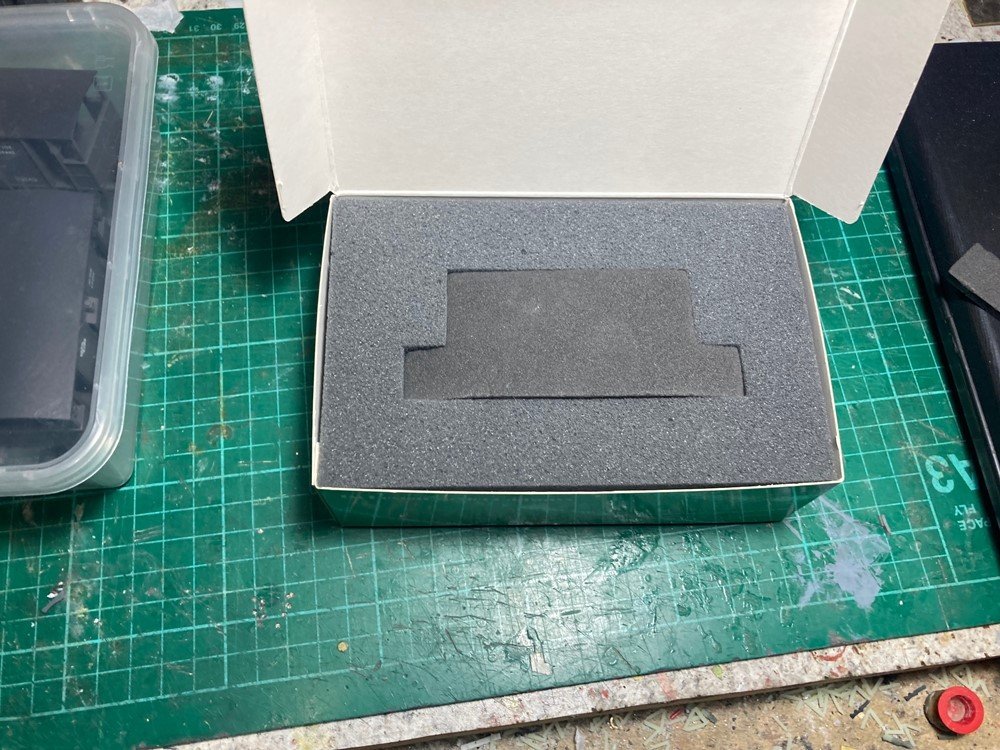
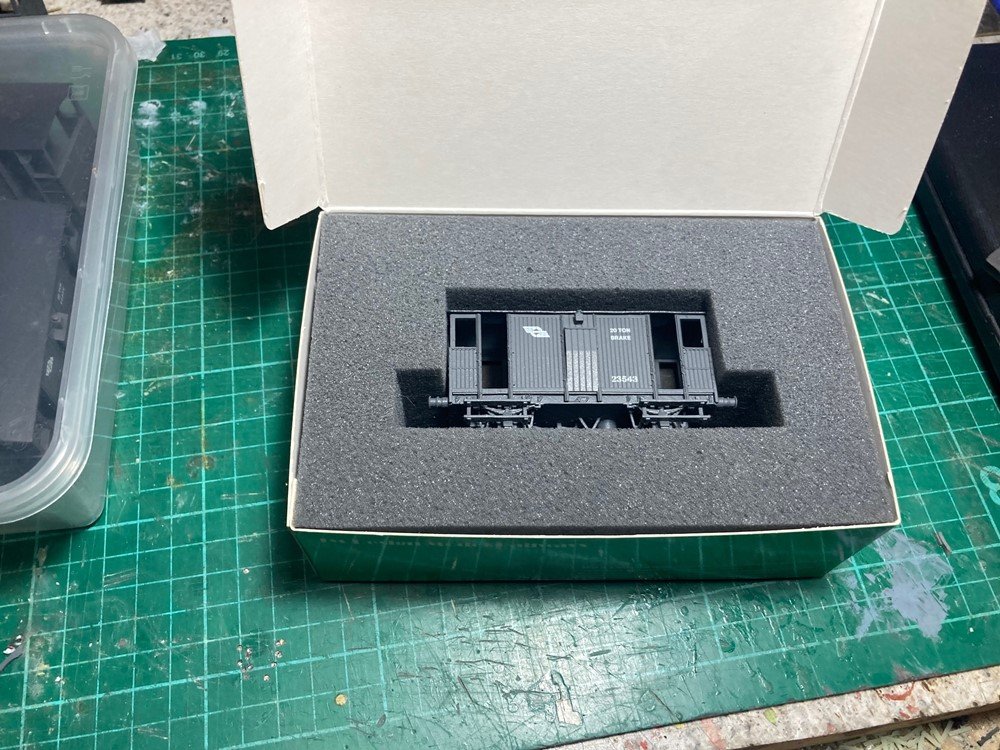
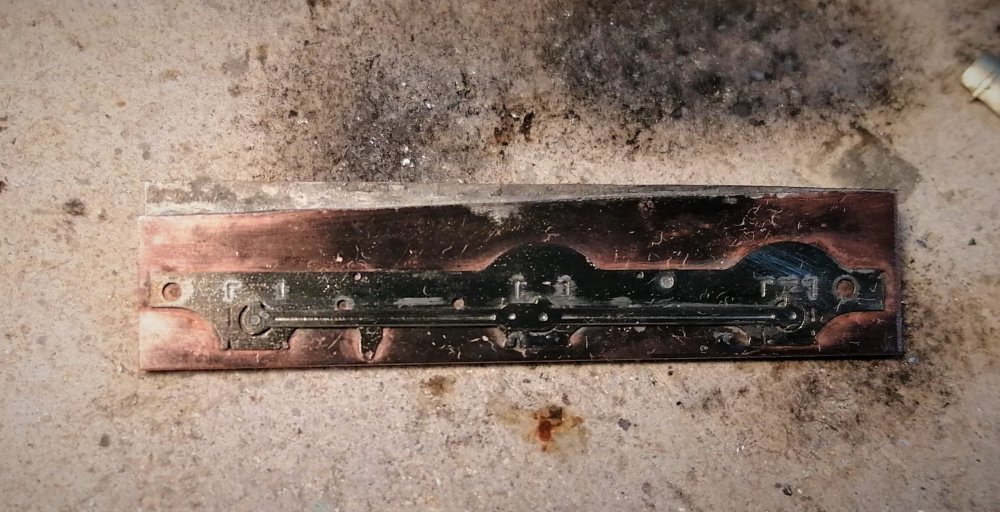
Customs & VAT
in News
Posted
Vat is liable on the total value of a shipment including freight not just the declared value of the goods, international shipping is zero rated for GST so there is no element of double taxation.
Hatton's probably claim the excess VAT as an expense when they reimburse a EU customer for vat charged by an Post on a tax paid item.
Using a EU Intermediary or customs agent is likely to be prohibitively expensive for low value (<€150) shipments, one of the major international postal/express companies quoted a $40 DDTP processing fee for each package shipped to the EU regardless of value.
Interestingly individual packages shipped using a DDTP service are delivered by Courier or Express companies rather than the Postal Service and shipped without a customs declaration or label on the box.
We printed labels for test DDTP shipments to customers in the UK using NZ Posts on-line system, interestingly labels were domestic UK using a UK Courier Company rather than an international parcel label with customs declaration.
I guess the main lesson is that modelers importing from outside of the EU can expect to pay higher prices for models including customs processing charges or limit their purchases to what's available in Irish model shops.